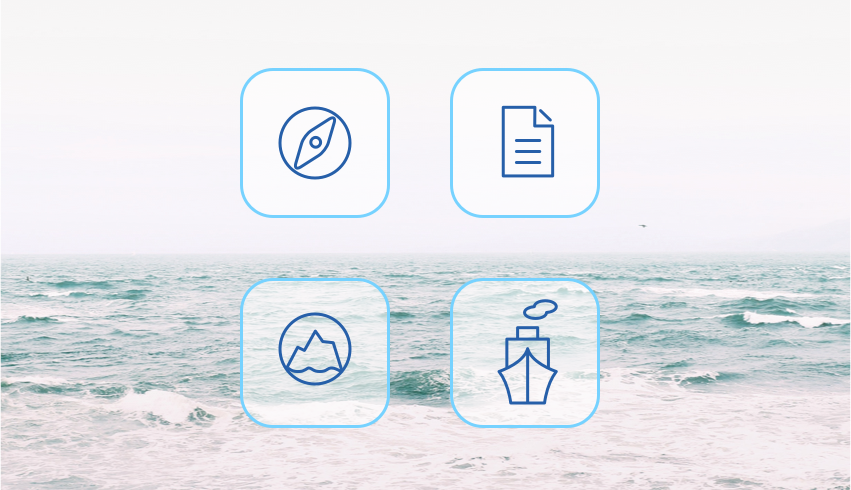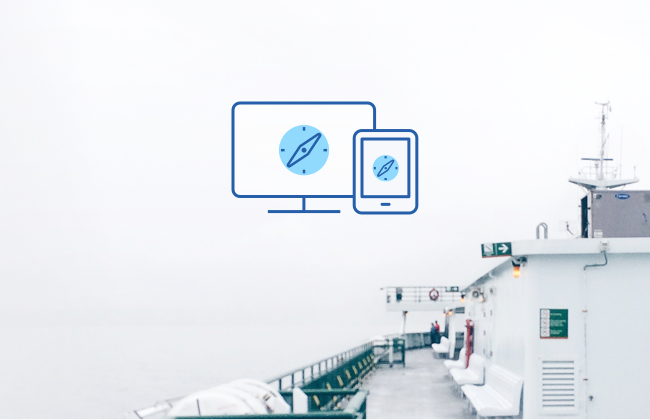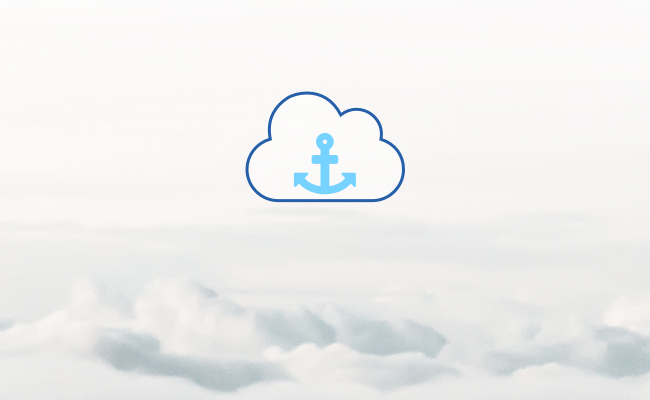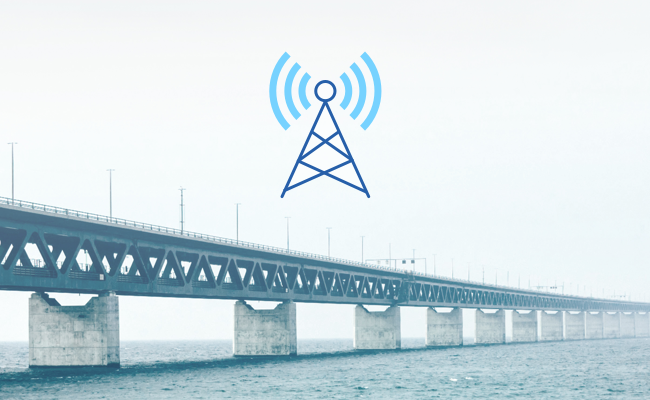Our more than 15 EfficienSea2 end user services are based on contemporary and novel technology and all aim at simplifying and streamlining information flows to maritime stakeholders and users. Our services are navigation services, Arctic services, administration services and an emission service.

 Navigation services – improving safety and efficiency
Navigation services – improving safety and efficiency
To ease navigation, we have developed, matured and where possible standardised services for:
- Maritime Safety Information and Notices to Mariners: Standardised service provided in a user-friendly and optimised format allowing for better promulgation and for intuitive, graphical portrayal on electronic chart displays. Read more.
- Meteorological Information on Route: Standardised meteorological and oceanographic information service allowing for integration on multiple platforms.
- Ice Charts: Standardised services allowing for visualisation and electronic chart display of ice occurrences on different platforms without using broadband.
- Crowd Sourcing of Ice Information: Service for gathering and sharing information about ice conditions, such as safe passage, ice thickness and icebergs.
- Nautical Charts based on S100 Standards: Charts in new internationally agreed format allowing for better update schemes, integration with different data types and better data maintenance schemes.
- Smart Buoy Interaction: Service for interaction with buoys providing, inter alia, light intensity control and access to meteorological sensors. Read more.
- Route Optimisation: Standardised and easily accessible service for acquiring an optimised route for a vessel.
- Route Exchange: Service for exchanging information (ship-to-ship and ship-to-shore) about vessels’ intended routes. Read more.
- No-go Areas and Comfort Zones: Services allowing for the merger of a variety of data, such as draft, bathymetry and tidal levels, into simpler information indicating where a vessel can operate safely. Read more.
Read Deliverable 4.3: Operational MSI_NM service
Read Deliverable 4.4: Documentation for MSI-NM
Read Deliverable 4.5 and 4.10: Operational METOC and Ice Chart Service
Read Deliverable 4.6: Documentation of METOC Service
Read Deliverable 4.8: Results for tests with sensor data and analysis (Smart Buoy)
Read Deliverable 4.9: Route Optimization Service
Read Deliverable 4.11: Documentation of ice charts service
Read Deliverable 6.1: Basic route handling exchange service
 Arctic services – improving safety and emergency response
Arctic services – improving safety and emergency response
To strengthen safety for operating in remote areas like the Arctic, we have developed, matured and where possible standardised services for:
- Arctic Live Position Sharing: Service for sharing a vessel’s position with very low latency (compared to positions gathered from satellite AIS).
- Arctic SAR Tool: Service for acquiring and sharing information relevant to SAR operations, such as search patterns, search areas covered and the location of vessels in the area. Read more.
- Space Weather Forecast: Service for forecasting and avoiding GPS fall-outs, based on investigations of the disruptive effects of space weather, which particularly influences ships’ communication abilities in Arctic waters.
Read Deliverable 2.6: Report on space weather forecast service v2
Read Deliverable 6.6: Crowd-sourcing of ice information v.2
Read Deliverable 6.7: ArcticWeb expanded to include self organised emergency response capabilities
 Administration services – reducing administrative burdens
Administration services – reducing administrative burdens
To reduce administrative burdens, we have developed, matured and where possible standardised services for improving the exchange of ship-to-shore and shore-to-ship information:
- Automated VTS/SRS reporting: Service for automated Vessel Traffic Service (VTS) and Ship Reporting System (SRS) using a proposed standard to be promoted internationally.
- Automated exchange of port information: Service for automated port reporting using a proposed standard to be promoted internationally.
- Reliable port information: Service for making reliable port information easily available to vessels using a proposed standard to be promoted internationally.
- Standardised templates and reporting forms: Service to facilitate the efficient, uniform, streamlining of information.
Read Deliverable 5.1: Draft S-100 Product Specification for common Port Reporting
Read Deliverable 5.2: Demonstration of prototype application for automated port reporting
Read Deliverable 5.3: Development of a new common port database concept and structure
Read: Deliverable 5.4: Online test of ship data transfer
Read Deliverable 6.2: Route reporting to VTS service
 Emission service – improving environmental monitoring
Emission service – improving environmental monitoring
To ensure a level playing field for ships operating in a Sulphur Emission Control Area (SECA), we have developed and matured a service for:
- Sulphur emission monitoring: Service for monitoring information about vessels’ SOx emissions.
Read Deliverable Deliverable 5.6: Report of available technologies and sensors
Read Deliverable 5.7: Report on online land-based system tests and ship-based tests
Read Deliverable 5.8: Report on working prototype.final
Our end user services have been developed based on the Maritime Connectivity Platform framework and organised according to the Maritime Service Portfolio (MSP) defined by the IMO e-Navigation Strategy. To the extent possible, our services have been standardised according to IHO S100 data models. Most services are be available on web-based platforms for the Arctic and Baltic areas. Services have also been prototyped and tested in commercial on board and shore equipment for the long-term roll-out. Learn more about platforms for services here.
Output: 15 e-Navigation and e-Maritime services
EfficienSea2 develops more than 15 end-user services at different stages of maturity. Most services, like basic navigation and weather solutions, have very high technological readiness levels, close to the market, and will be tested and implemented in real-world platforms. Other, more advanced services will be tested at experimental levels. Focus is on open-source software and providing input to relevant standardisation bodies. It is anticipated that services such as Maritime Safety Information and Notices to Mariners will reach new global standards within the project scope.





